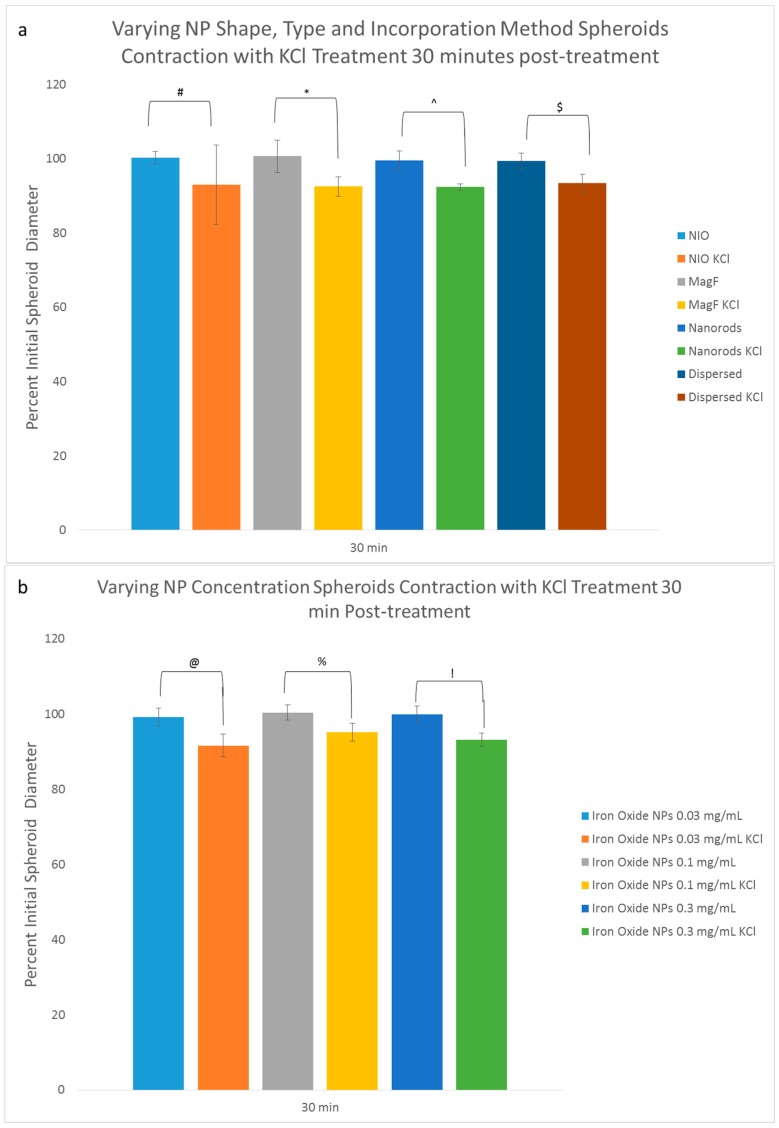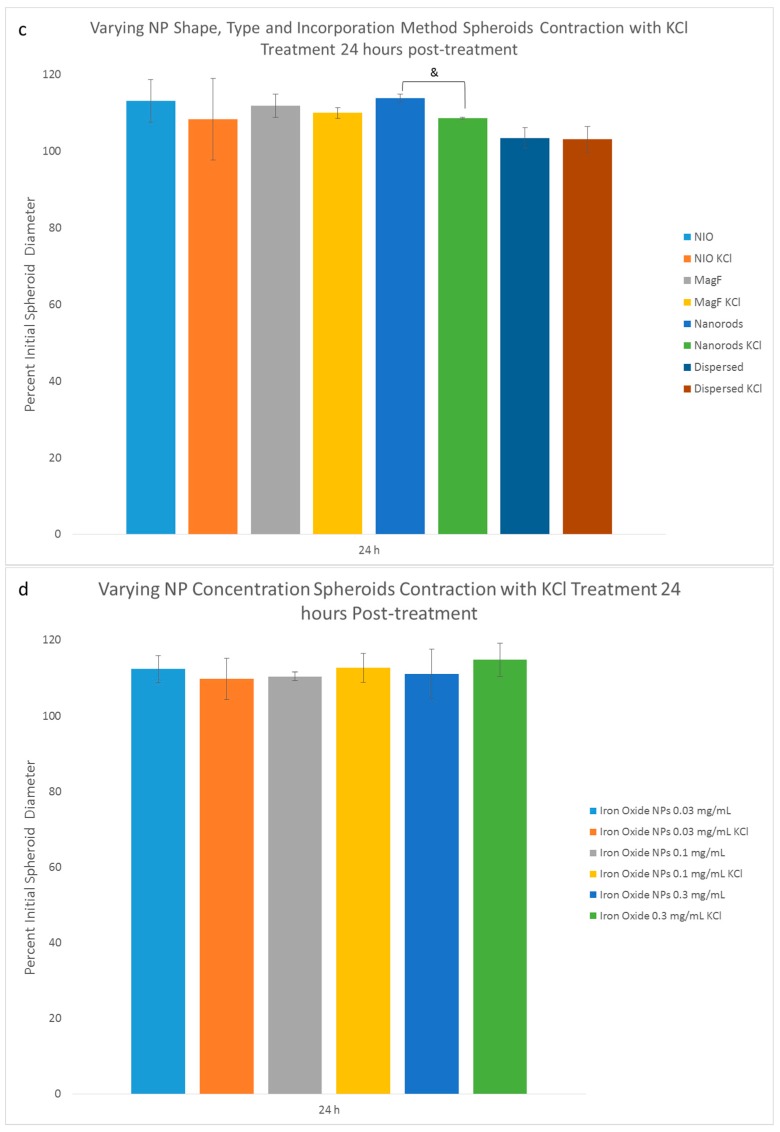Figure 4.
Potassium Chloride Functional Assay. (a–d) Spheroids were fabricated with varying NP concentrations shape, type, and incorporation method. Two sets of spheroids were collected from each group after 3 days of fusing (n = 5). One from each set were treated with KCl and the other set was the control. Spheroids were imaged before KCl treatment, 30 min and 24 h after KCl treatment. Percent initial spheroid diameter for KCl treated samples were compared to their counterparts without the treatment at 30 min and 24 h. The results indicate that there is statistical difference between all the treatment and non-treatment groups at 30 min and only nanorods at 24 h showed a significant difference in percent initial diameter between KCl treatment and non-treatment samples. This statistical difference is represented by “#”, “*”, “^” “$”, “@”, “%”, “!”, and “&” for (a–d). This suggests that none of the experimental groups have an adverse effect on the functionality of the spheroids; (e) Spheroids were fabricated with varying amounts of collagen content. Two sets of spheroids were collected from each group after 3 days of fusing (n = 5). The results indicate that there is a statistical difference (represented by “*” and “#”) after 30 min of KCl treatment between experimental group and control for 0.017 mg/mL and 0.1 mg/mL of collagen. After 24 h there is no statistical difference between the groups.



